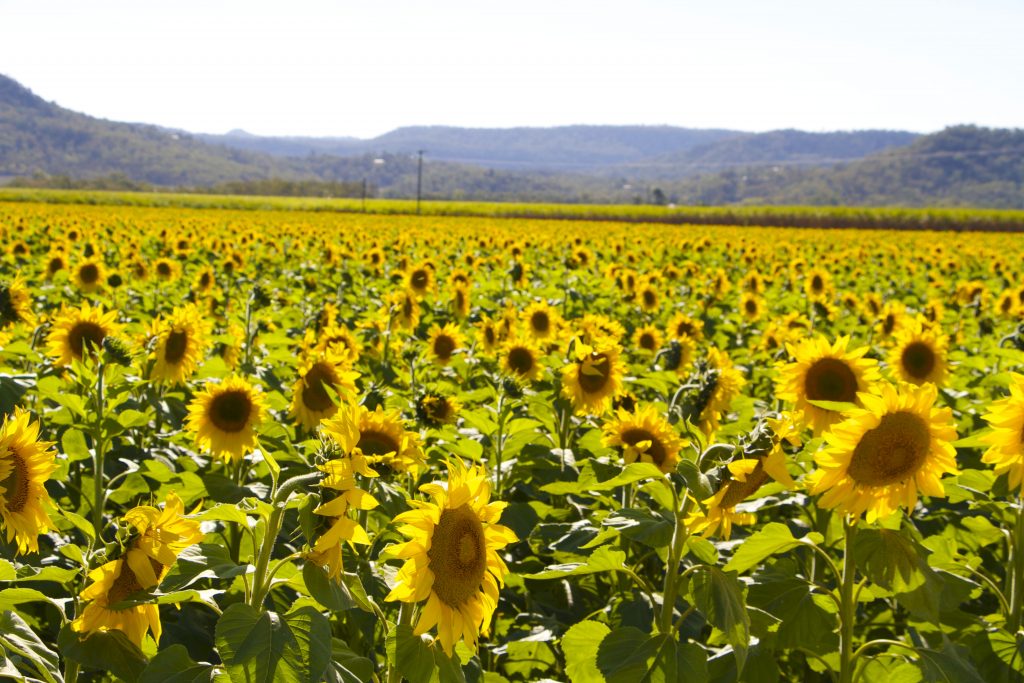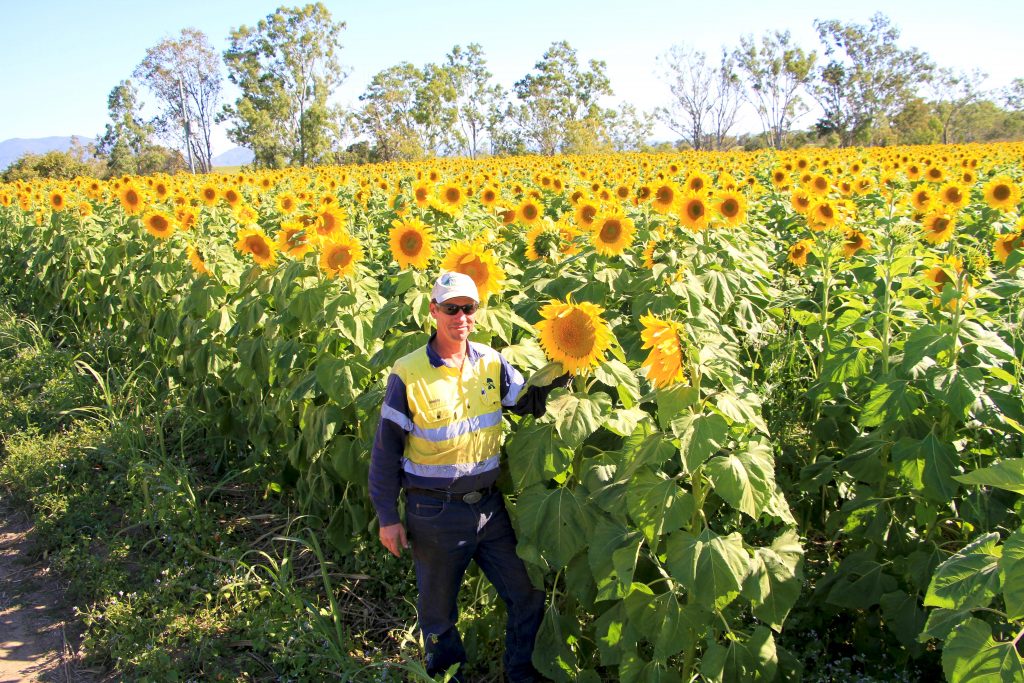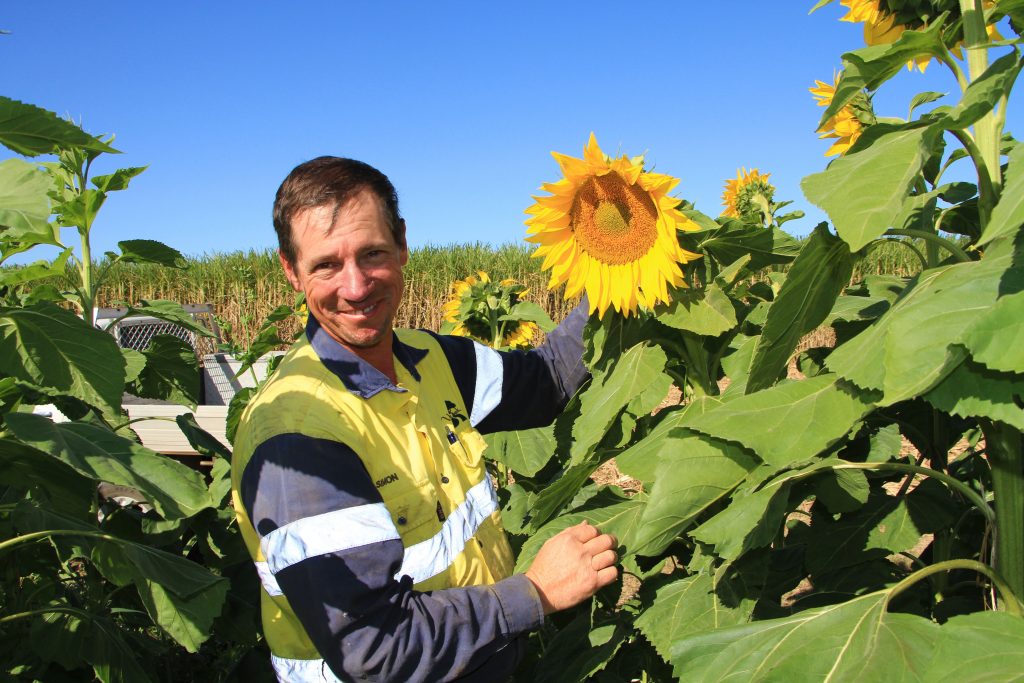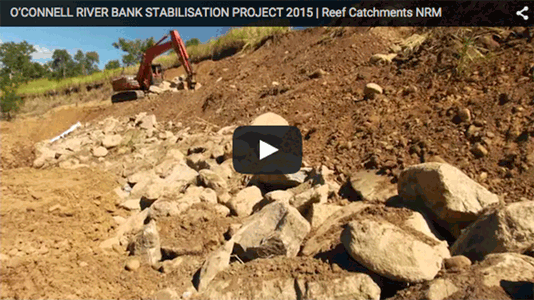
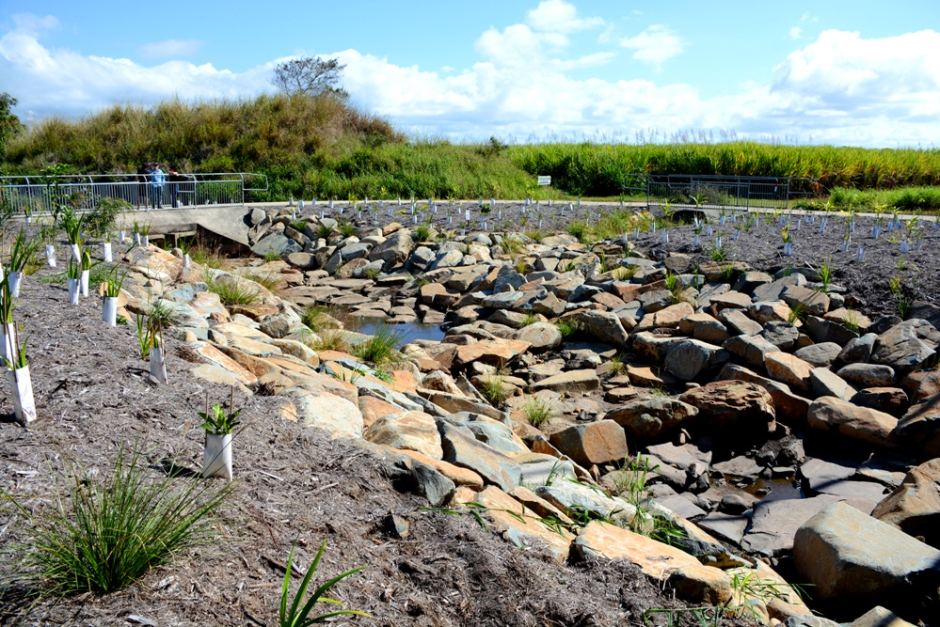
Environmental rehabilitation works at Lagoons Creek (Mackay Regional Botanic Gardens) are set to help improve life for local native fish and other wildlife species.
Works will also assist in stabilising the stream bed, reducing erosion and adding to the natural beauty of the park area.
The Lagoons Creek Rehabilitation is a major project being undertaken by Reef Catchments in conjunction with the Mackay Regional Council and Catchment Solutions to increase the extent of native habitat and provide aquatic connectivity between the Pioneer River Estuary and important upstream wetland habitats along Lagoons Creek.
Activities recently completed at the site include the installation of a rock-ramp fishway designed to improve fish movement through the Mackay urban area. Two erosion control structures have also been installed. Works have additionally involved significant revegetation and weed control.
Catchment Solutions project officer, Matt Moore, said rehabilitating wetland areas to help aid the movement of native fish and improve habitat for wildlife in the Mackay region was critical.
“In the Mackay region, we have lost quite a lot of important wetland area to urban and agricultural development, so preserving and rebuilding the lowland wetlands that remain are critical. The Lagoons Creek is a tributary of the lower Pioneer River and is one example of a waterway that has been channelised, cleared and undergone significant structural change over time,” he said.
“Important works completed in conjunction with the Mackay Regional Council and co-funded by the Australian Government will now help restore connectivity through the wider Mackay area.”
Mr Moore said works were especially important in maintaining healthy levels of native migratory species, including fish, birds, reptiles and mammals.
“For example barramundi, sea mullet and tarpon migrate from the sea into productive freshwater wetland habitats as juveniles where they feed and grow before migrating back to the sea to spawn and complete their life cycle. By assisting their journey through the region, we help ensure the future survival of these iconic fish, many of which are important recreational, commercial and indigenous fishery species,” Mr Moore said.
Prior to works, large amounts of exotic weed (para grass) were choking the waterways and forming a barrier to fish migration.
“Had the site been left unattended, streambed erosion would have continued, barriers to fish and wildlife would have remained and eventually the result would be an environmental ‘bottleneck’ between land and sea in the urban area of Mackay,” Mr Moore said.
“Thanks to the work being done by Reef Catchments and Mackay Regional Council we are now well placed to continue to remove that bottleneck and improve the environmental and aesthetic value of the area.”
Mackay Regional Council Parks and Environment portfolio councillor, Theresa Morgan, said council was committed to the maintenance and improved condition of the local environment.
“Mackay’s natural environment contains unique species and ecosystems that can’t be found anywhere else in the world so it is important that we protect these,” she said.
“Our beaches, islands, fishing grounds, rainforests and unique wildlife also play an important role in the region’s tourism industry.
“Investing in the natural environment is not only beneficial to the health of local ecosystems but is essential to the prosperity of the local economy.”
This project is a joint initiative of Reef Catchments, Catchment Solutions and Mackay Regional Council, co-funded by Mackay Regional Council, the Department of Transport and Main Roads and the Australian Government Reef Programme.
